Contact: Joe Maldonado | joe.maldonado@wisc.edu | (414) 339-4574
A new program funded by the U.S. Department of Agriculture will give youth in three Wisconsin counties the chance to work with the University of Wisconsin-Madison Division of Extension to explore post-high school educational and work opportunities. The USDA’s Children, Youth, and Families at Risk (CYFAR) program awarded $640,000 to the UW-Madison Division of Extension and North Carolina Agricultural &Technical University to launch the program “Nia: Pathways and Purpose for the Future.” The program will focus on serving youth in Waukesha, Rock, and Kenosha Counties – three urban and suburban counties where Black, indigenous, and youth of color often experience disparities in transitioning from high school to success in college, careers, and the adult world. Nia will also serve youth in limited-income rural communities in North Carolina.
“In youth development, there is a lack of culturally relevant, evidence-based programs that give youth who are Black, Indigenous, and People of Color (BIPOC) the chance to explore their post-high school pathways while developing their cultural identities,” said Joe Maldonado, Extension’s Community Youth Development Program Manager. “They often aren’t exposed to all the options that are available to them, including trades and professional programs.”
Maldonado cited state data on the increase of racial diversity of Wisconsin, particularly among youth, and the disparate outcomes between Black and white Wisconsinites. “Wisconsin is becoming increasingly racially and ethnically diverse, particularly among youth. The Census estimates that 6.7% of Wisconsin residents are Black, but 9.2% of Wisconsin K-12 students are Black. Over 90% of Wisconsin’s Black residents live in Milwaukee, Dane, Racine, Kenosha, Rock, and Waukesha Counties,” said Maldonado. “At a state level, there is an almost 20 percent gap in graduation rates between Black and white students, a nearly 30 percent gap between white and Black students in enrollment in postsecondary institutions, a Black unemployment rate in Wisconsin is almost triple the white rate, and a Black to white rate of incarceration of 11.5 to 1.”
Nia is a Swahili word meaning “purpose.” Extension’s Project Nia is a new and distinct program.
“The Nia project is an exciting opportunity to learn what works for youth to explore possible future pathways. Extension is designed to work alongside communities to respond to needs and bring UW resources to the table, and this partnership with North Carolina A&T connects Wisconsin communities to knowledge and program approaches rooted in Black experience,” said Matt Calvert, Extension’s Positive Youth Development Institute Director.
Nia will work with teenagers beginning in middle school and encourage them to explore opportunities, work with mentors, and learn about college, professional training, and work options before making decisions about their futures. For BIPOC youth, who are often the first in their family to pursue post-secondary education, this knowledge and social network can increase success in an unfamiliar environment.
Nia will have both statewide and multistate components, but the core of its work will focus on the needs of local youth and community partners. “This grant opportunity allows Waukesha County to expand access to our growing diverse population,” says James Boling Jr., Positive Youth Development Educator, Waukesha County Extension. “This current school year, seven public schools in the county have a minority enrollment of 20% or greater. This opportunity aligns with the purpose, vision, and values of University of Wisconsin-Madison. We want to empower others, promote lifelong learning, appreciate, and honor differences, foster positive relationships, and respect and serve to meet the needs of our communities, which is a central part of our mission.”
The CYFAR funding will span five years. The first year will focus on building strong relationships with schools, libraries, and community organizations in the targeted counties, working with school staff, youth workers, and Extension educators to ensure the program aligns with organizational priorities and schedules, and recruiting teens to participate in a spring pilot program. About 10 youth in each of the three Wisconsin counties will participate in the pilot. The full program will be rolled out in Fall 2022.
UW-Madison Division of Extension Positive Youth Development educators James Boling Jr. (Waukesha County), Erin Conway (Rock County), and Erica Ness (Kenosha County) will work with teachers and students and youth serving professionals in the targeted counties to introduce the program and launch the pilot. Maldonado will serve as principal investigator for Nia. Kendra Alexander, Ph.D., former UW-Madison professor and current North Carolina A&T assistant professor in the department of social work and sociology, will play a major role in curriculum development and program evaluation.
For more on UW-Madison Extension: extension.wisc.edu
For more on Community Youth Development: youth.extension.wisc.edu



